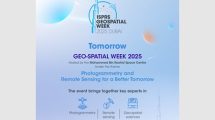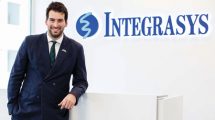
Martin Coleman of Satellite Interference Reduction Group (IRG) tells SatellitePro ME that the Carrier ID experiment at the Olympics was a resounding success spanning more than 2,000 hours of satellite coverage. He stresses that this is only the beginning of a process to ensure a global standard.
If a process that took the satellite industry just under a year to accomplish, is not remarkable enough, one of the prime movers behind implementing Carrier ID in time for the London 2012 Olympics – Martin Coleman, executive director of the Satellite Interference Reduction Group (IRG) – can give you some compelling bytes highlighting the extraordinary nature of this global exercise.
Carrier ID is a stamp on uplink signals that will enable satellite operators to more efficiently identify transmissions to their satellites and thereby accelerate coordination with earth station operators in the event of signal interference.
Speaking to SatellitePro ME on the sidelines at IBC 2012, Coleman stated, “The opening statement should be ‘nothing happened’. If you look back at the World Cup in 2010, plenty happened in terms of interference.
“We spent considerable time in the beginning of 2011 preparing to implement Carrier ID. It was probably not the most exciting process, but the aim as announced at IBC 2011 was to bring Carrier ID to the Olympics.”
Satellite operators, led by Eutelsat, Intelsat and SES whose combined orbital assets represent almost 60% of global commercial satellite capacity, completed the process of adapting their earth station information tables to include Carrier ID information to read, extract and interpret data.
Recalling the painstaking process, Coleman said, “From testing carriers and encoders to allowing monitoring companies to test the process of detecting Carrier ID – just this process involved a sizeable number of companies. And then we had to get the three operators to agree upon how they would implement the process.”
Quality assurance of DVB satellite transmissions engaged the satellite community at large, including satellite operators, encoder and modulator manufacturers, broadcasters and uplink providers. The effort was also supported by three international associations: the World Broadcasting Unions-International Satellite Operations Group (WBU-ISOG), the GVF (Global VSAT Forum) and IRG (Satellite Interference Reduction Group).
Modulator and encoder manufacturers, accounting for the vast majority of satellite transmission equipment used by broadcasters and service providers, have developed new models and system upgrades for Carrier ID use. They include Adtec Digital, Comtech EF Data, Ericsson, Fujitsu, Harmonic, IDC, NTT Electronics, Newtec and Vislink.
Leading broadcasters, agencies and service providers also updated their systems to be Carrier ID ready.
“By July 2012, we had the tests done and we had covered transmissions not just to Europe but to North America as well. Overall, it was a clean run – we had good results.”
Missing the Usain Bolt moment, Coleman said, would not have been “good for business”. The results of the Carrier ID exercise, happily, exceeded his expectations.
“Statistically around 50% of all transmission from London had Carrier ID. To be honest I was thinking if we get to 20%, it would be good.”
Coleman stresses that Carrier ID at London 2012 was only the beginning of a process to ensure a global standard.
“Getting the process in place is key. And while doing that for the Olympics was challenging enough, we need to manage that globally. We know that the DVB process is now complete and successful. We should have a Carrier ID standard by the end of this year.”
One statistic that Coleman enjoys quoting is that “it has taken 43 people to get Carrier ID done – to make a global difference. The key is that you have got to want to do it. IRG has given the industry a platform to make a difference rather than just talk interminably about it.”
There has been an unexpectedly positive fallout from this process. Coleman explained, “What is interesting is that, albeit a small change, there is a perception that interference is starting to reduce already.
This is probably because initiatives such as Carrier ID have spurred the industry to keep a keen eye on its own processes. Players across the board are initiating better procedures, better training and more reliable equipment, among other measures.”
The process of taking Carrier ID from talk to action has been personally satisfying, said Coleman. The 43 years of experience that he brings to the satellite industry probably helped him carry the industry along in what observers describe as an unprecedented demonstration of collaboration. He also knows that the process is far from over. Carrier ID, according to Coleman, is only one tool in the tool box and there is a need for more such tools.
“We must keep these initiatives and processes alive and yet aim for quality without increasing cost.”














Add Comment